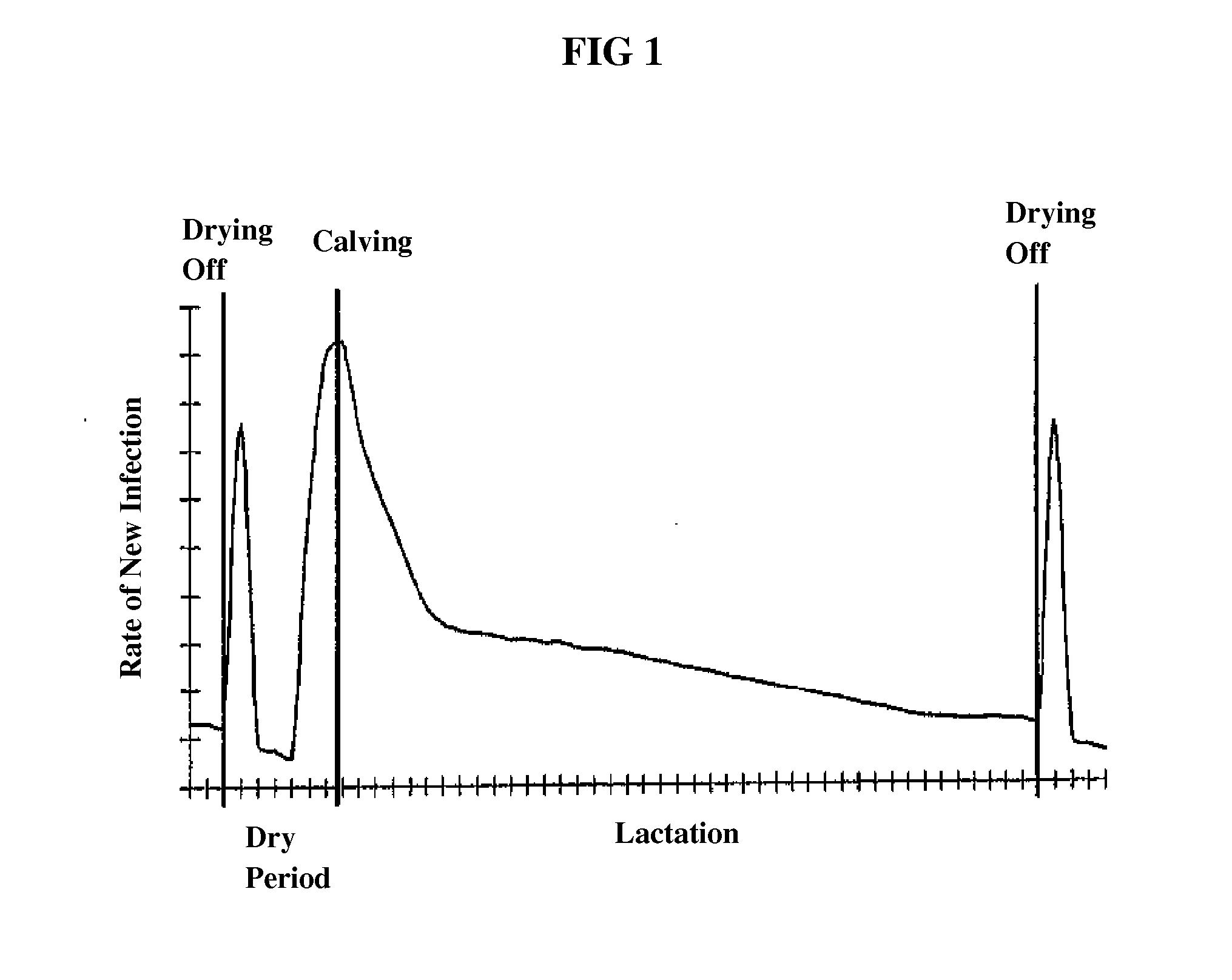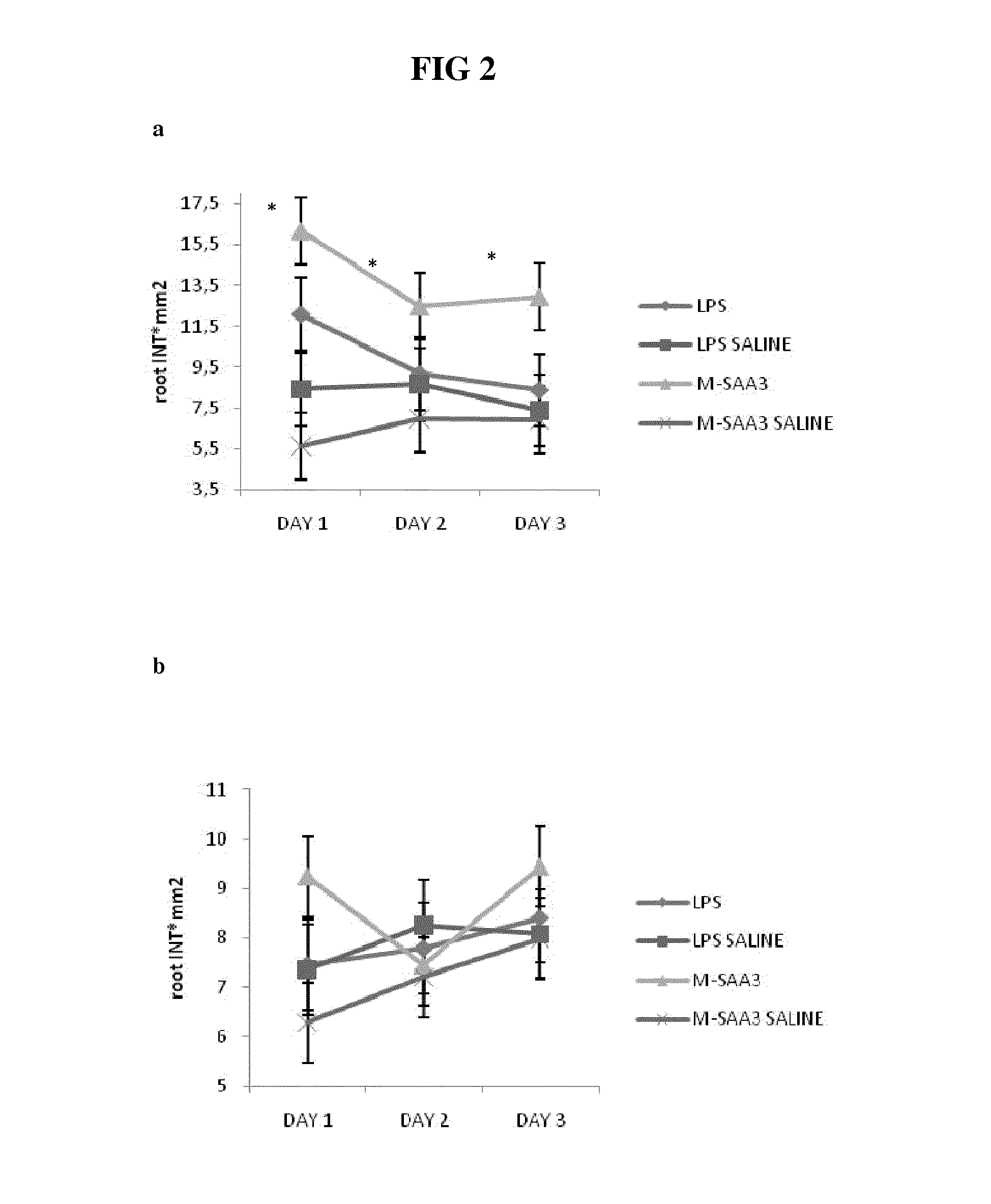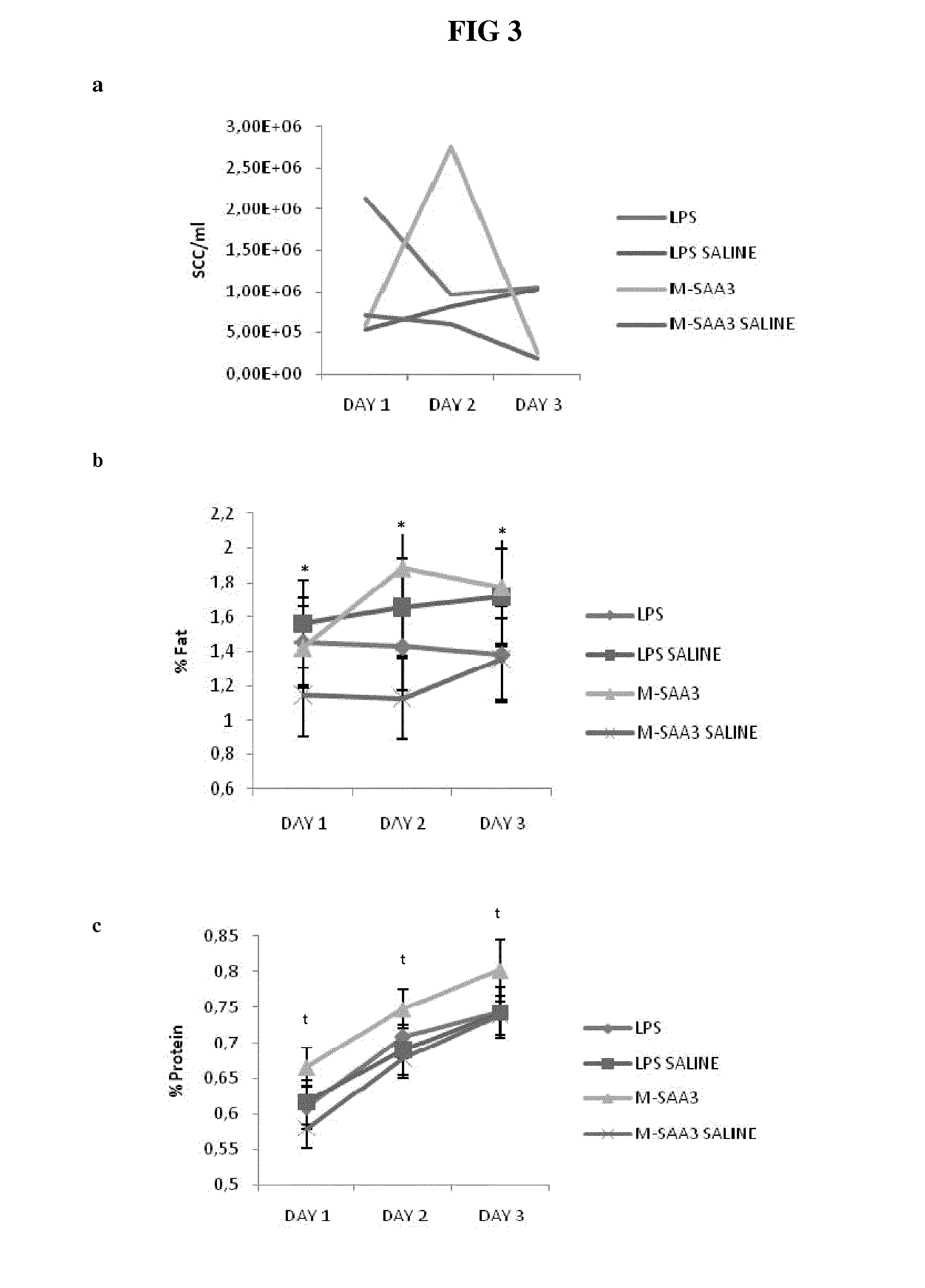Compositions and method for controlling infections in non-human mammals using acute phase proteins
a technology of acute phase protein and composition, applied in the field of composition and methods for controlling infections in non-human mammals, can solve the problems of reduced productive period duration, increased risk of intra-mammary infections in animals with high milk yield, and increased risk of intra-mammary infections in animals. , to achieve the effect of enhancing the welfare of non-human mammals, enhancing udder health, and improving mammary gland involution
- Summary
- Abstract
- Description
- Claims
- Application Information
AI Technical Summary
Benefits of technology
Problems solved by technology
Method used
Image
Examples
example 1
Preparation of SAA-3 Protein
[0071]1.1. Production in E. coli
[0072]The EcUR206 strain (an E. coli BL21 Star (DE3)-pET101 / D-TOPO vector containing the goat M-SAA3 sequence) was used in recombinant protein production. The process has been explained elsewhere (Domènech et al., 2012). Briefly, BL21 / pURAD1 was grown in 400 ml of LB-Amp media at an initial OD600 of 0.05 until log phase was achieved. Recombinant expression was induced by IPTG 0.1 mM for 1 h and 20 min. Cell pellet was obtained by centrifugation at 6000 g for 10 min, and frozen at −80° C. until use. Cell pellets were resuspended to a OD600=100 in 20 mM Na2HPO4 / NaH2PO4, 0.5 M NaCl, pH 7.4 buffer containing lysozyme (0.2 mg / ml), DNase I and RNase A (20 μg / ml), cocktail inhibitor of proteases (1 mM) and MgCl2 (1 mM) during 30 min at room temperature. The suspension was mixed with pre-weighted 0.1 mm glass beads (range 26-36 mg per ml of sample) (Biospec Product, Inc, Bartlesville, USA). Three cycles of beating of 45 sec each, ...
example 2
Study of the Efficiency of SAA-3 Protein on Bovine Welfare by Measuring Effect on Somatic Cell Counts (SCC), Metalloproteinases Activity and Fat and Protein Content after Mammary Gland Infusion
[0078]Two quarters of nine cows were intra-mammary infused using mammary cannulas with 1 mg of M-SAA3 and 80 ng E. coli LPS (Sigma) (=control) to reproduce the possible effect of LPS traces in purified recombinant SAA-3 fraction. The same volume (10 ml) of saline solution was infused in respective control quarters (front or back quarters). Immediately after treatment all quarters were treated intra-mammary with routine antibiotic (Orbenin extra dry cow, Pfizer). Front and back quarters were treated independently statistically. Milk samples were taken the first day at 8 a.m before intra-mammary infusion (T=0) and every day at 8 a.m during 3 consecutive days (T=1, T=2 and T=3). Ten ml of milk were frozen for metalloproteinases analyses and fresh milk was analyzed for somatic cell count (SCC), fa...
example 3
Study of the Efficiency of SAA-3 Protein on IMIs by Measuring the Inhibition of S. aureus Translocation and IL-8 Expression in Mammary Gland Primary Cultures
Mammary Gland Primary Cultures
[0090]Mammary gland tissue was obtained at slaughterhouse and transported in chilled PBS with 100 μg / ml streptomycin, 100 U / ml penicillin and 2.5μ / ml amphotericinB. In the laboratory, tissue was cut into small pieces and incubated in Hanks balanced salt solution with 0.1 mM EDTA and 0.1 mM DTT for 30 min at 37° C. in 10% CO2 at 150 rpm. Then, supernatant was removed and RPMI 1640 media with 0.05% collagenase was added and incubated for 30 min. The media contained epithelial cells, which were centrifuged at 800 g for 5 min. This process was repeated 3 times. Final cell pellets were resuspended in F-12 media with 8 μg / ml bovine insuline, 10 μg / ml gentamycin, 50 μg / ml hydrocortisone, 100 μg / ml streptomycin, 100 U / ml penicillin and 2.5 μg / ml amphotericin. Cells were quantified by haemocytometer counting...
PUM
| Property | Measurement | Unit |
|---|---|---|
| pH | aaaaa | aaaaa |
| volume | aaaaa | aaaaa |
| volume | aaaaa | aaaaa |
Abstract
Description
Claims
Application Information
 Login to View More
Login to View More - R&D
- Intellectual Property
- Life Sciences
- Materials
- Tech Scout
- Unparalleled Data Quality
- Higher Quality Content
- 60% Fewer Hallucinations
Browse by: Latest US Patents, China's latest patents, Technical Efficacy Thesaurus, Application Domain, Technology Topic, Popular Technical Reports.
© 2025 PatSnap. All rights reserved.Legal|Privacy policy|Modern Slavery Act Transparency Statement|Sitemap|About US| Contact US: help@patsnap.com



